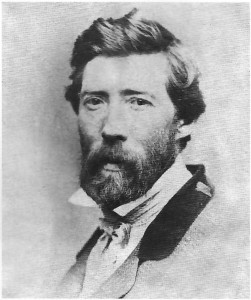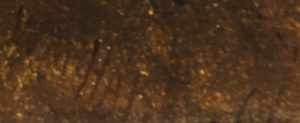William Hart, with his brother James (who also became an artist), was brought to this country by his parents, James and Marion Robertson Hart, from Scotland on the ship Camillus on February 12, 1830. Hart began his career as a coach and ornamental painter in Troy, New York. For several years he traveled throughout Michigan as an itinerant painter doing portraits before going to Europe to study. From 1852 on he kept a studio in New York City, working out of the 10th Street Studio Building from 1859 to 1870. He became an associate member of the National Academy of Design in 1855 and a full member in 1858. He moved to Brooklyn and became the first president of the Brooklyn Academy of Design in 1865. He was also a founder of the American Watercolor Society.
From the dates of his White Mountain views, he must have traveled in the area many times between 1859 and 1870. Chocorua Peak was engraved by the Boston engraver William Wellstood in 1861, giving Hart’s work a wide audience. He exhibited at the Boston Athenaeum and at the National Academy of Design throughout his active life as an artist. He also exhibited in Philadelphia, Baltimore, and Washington, DC. Albany, NY, was an important art center in the mid-19th century, and Hart’s work was exhibited at the studio of Erastus Dow Palmer in that city in 1864 as a benefit for the U.S. Sanitary Commission.
His work has been preserved at the Metropolitan Museum of Art as well as at many other museums.
Both his brother, James, and his sister, Julie Hart Beers Kempson, became fine painters in their own right. Contrary to some biographies of William Hart, genealogical information shows William had neither a middle name nor initial.
Signatures
- 1861
- 1864
- 1871
- 1879
References
Great great nephew, Ashley Bracken
New Hampshire Scenery
William Hart Catalogue Raisonné and Artistic Biography




![1871. WmHART [superscript m, underlined]](https://www.whitemountainart.com/wp-content/uploads/2018/05/wmh104Sig1871P-300x66.jpg)
